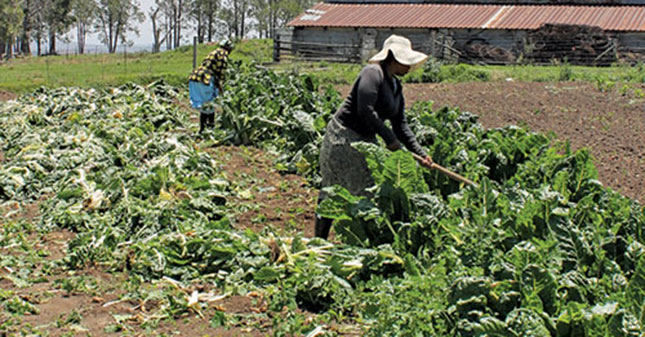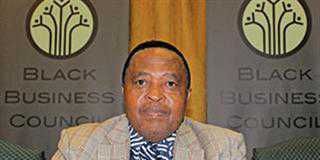Your R6 billion agriculture fund has sparked both excitement and confusion since Tina Joemat-Pettersson announced the agriculture department’s support for it in her budget vote speech. Could you describe the character and purpose of the fund once and for all?
The R6 billion figure is correct, but there are actually two R3 billion funds – the Futuregrowth Agri Fund, which is a strictly South African fund, and the Old Mutual Africa Fund, which will be for Africa, excluding South Africa.
Could you explain where Futuregrowth comes from, and why you’ve set up an agricultural fund?
Futuregrowth is in the business of managing funds and providing products investors want. We’re opening up a channel for our traditional investors, the retirement fund industry. When we’ve done anything relating to agriculture in the past, this industry has been really keen on it, because there are very few vehicles through which they can gain access to that asset class.
Many of the trustees, especially on the worker side, come from rural areas, and so agriculture is an area they really support. They see it as stemming urbanisation and creating jobs. It also hits so many buttons in terms of “social responsibility”. That’s where our heart lies. We’ve got a suite of socially responsible investment products, including bonds, equity, and property.
What experience does Futuregrowth have in agriculture?
We’ve aligned ourselves with United Farmers Fund Asset Management (UFF AM), who evolved the particular strategy we adopted over 10 years in South Africa and Namibia. They bring the agricultural expertise, we bring asset management expertise.
What is this strategy and how does it tie in with land reform?
Three million hectares have been transferred in the name of land reform, with another three million hectares in the pipeline. Of that, 90% is unproductive, and a lot of what’s in the pipeline is rapidly becoming so. One reasons is that the land affairs department, with an insufficient budget, negotiates market-related prices with existing farmers. But the farmers can’t get the money immediately.
At the moment, 50% is paid out after six months and the balance is kept for up to six years, because government wants farmers to effect the transformation on the farm.But they don’t have the skills, and often for sentimental reasons they just want to walk away. Generally, they’re not willing to put working capital in, and farms need working capital. The communities, on the other hand, don’t have the skills to farm profitably. Within this context the fund will look at what’s available in terms of land reform farms. We’ll look for farms that are in good condition and avoid communities that are factionalised.
Where will the money come from?
Half the money for both funds comes from SNS Asset Management, a Dutch asset manager. I can’t mention the names of local investors. They’re development finance institutes (DFIs) and we haven’t finalised the deals yet. SNS will manage the relationships on their side because some of their investors want more exposure to Africa, others more to South Africa, and some want both.
Why do some investors go for Africa, and some for South Africa?
I can’t speak for them, but the feeling I got when I discussed our fund with one of the foreign DFIs is that they’ve invested enough in South Africa, but have battled to invest in the rest of Africa, because reputable channels are few and far between.
Does the uncertainty surrounding land reform in South Africa play a part in these decisions?
I think a big factor is the fact that certain investors regard South Africa as highly developed, with access to health benefits and money, while the rest of Africa needs their support more. But there’s definitely demand from people we’ve approached with regard to the South Africa fund.
What’s in it for your investors?
We immediately appoint an operator and implement particular labour interventions, specifically in skills assessment, training and health care. Government can’t agree upfront to buy the land back from the fund, but we believe that within four to six years these farms will be ideally positioned for government to acquire to meet land reform objectives, once transformation has been achieved and if government has the necessary funding. The take-out price will be based on the market value at the time.
How long is enough time for skills transfer?
We believe between four and six years. The selection criteria are so strict that transformation will happen in this time frame.
Who will transfer skills?
We immediately appoint an operator, and we’re talking big players, mainly international operators. Some of the local guys could be KWV, Parmalat and Clover. A very strict contract is negotiated between the fund and the operator to ensure they operate the land sustainably. The operator comes in, provides working capital and does the labour force interventions.
Key to this is that the operators will own the integrated value chain, from the land to the end user. The fund benefits over the 10- to 12-year term, because the capital value of scarce prime agricultural land will increase. It also gets a lease fee from the operator. This way we can offer our investors adequate returns, while minimising the commodity risk associated with primary agricultural activities.
What’s in it for the operator?
Historically, farmers took all the risk. The middleman made big profits and took no risk. But more and more, supermarkets insist on Fair Trade assurances and other forms of accreditation, so middlemen can’t just pocket all the profits. They have to move towards land management, to ensure workforce interventions, crop spraying, and fertiliser programmes are monitored.
We also have specific providers of healthcare products and education and training. This ensures a healthy and motivated community, providing a workforce that the operator can train and integrate into the management of the farm over time. The operator wants to be aligned with the local community so they’ll retain management of the land, or at least access to the products, should government buy the land and give or lease it to the community.
What happens to the operator after government buys back the land?
If the community is happy with the relationship, they will keep them on. When the community takes over they will still need buyers for their produce, so operator and community interests should remain very much aligned. However, one can’t bargain on this, which is why the fund’s major activity is monitoring the operators. The UFF AM guys have built up an extensive database and a very sophisticated IT system, so there are parameters the operator has to work within.
Anything that falls outside of those parameters results in an intervention, over and above the normal quarterly interventions. When it comes to buying commercial land, we’ll insist on the same interventions, but when we exit we could sell to government as we would have involved the local community. However, it’s more likely we’ll sell to either a partner that we would have from the start, or the operator.
Most of the commercial deals will be joint ventures with businesses that need capital to develop land, or acquire more land to consolidate and create a large viable operation. They will then be able to meet the needs of the end-user in terms of producing specific volumes of certain products in a specific period. Here the fund will hold the land for 10 to 12 years.
Sounds like a lot of risk for the operator …
The operator takes all the agricultural risk, but the model proves that everybody’s interests are aligned and it can work.
Does the fund target only land reform farms?
Some 50% of the fund is targeted at land reform and redistribution. The other 50% is straight commercial, where we go into partnership with an existing businessperson who wants to buy more farms. That farmer must deliver the same interventions and the same monitoring because this will speed up turnaround on investment.
What scale of commercial farming operation would you consider partnering with?
We’re looking at big farms – the R3 billion is going into only 30 deals. This isn’t empowerment funding. We’re not doing BEE and we’re not doing loans. What we do is big projects and landownership, so that excludes the vast majority of local farmers.
Where exactly does government come in?
We hope government will facilitate access to failed and non-starter land reform initiatives, which we could buy. We believe this will work because landowners are happy to take immediate money, and have zero subsequent involvement.
After the minister’s announcement, nothing was heard about the partnership for months. What happened?
To begin with, we expected to sign a memorandum of understanding with the land affairs department to make it easier to access underused land, and establish certain securities around this issue. We have a very good relationship with government, but this formal relationship isn’t going to happen.
Government remains an important partner to the fund, and its buy-in is crucial if we’re to achieve our land reform objectives. But we don’t rely on government to move forward. As things stand we’re doing the first closing of the fund at the end of September, and the fund will make its first major investment in early October.
With the green paper on land reform imminent, and amendments to the property clause being widely mooted, aren’t you concerned you’ll end up exposed to sovereign risk?
The minister has hinted that land tenure reform measures will restrict foreign ownership of land. The fund will have foreign investors and its objective will be to own land, but not over the long term. With the commercial ventures, the interventions increase community involvement. We believe government could see those as flagship projects they’d be willing to pay for to meet their land reform targets by 2020/25.
Are you offering a private equity model?
Generally the retirement fund industry has a problem with private equity models, because they run into red tape right from the start. The South African fund is going to be a private equity model, but we’ll offer investors a unitised, on-balance-sheet portfolio where they buy units, like a unit trust. That will sit on Old Mutual’s balance sheet. It gives the investor a higher degree of liquidity, simply because some investors might want to exit, while there might be demand for others to come in at a later stage.
Contact James Howard on 021 659 5300.













